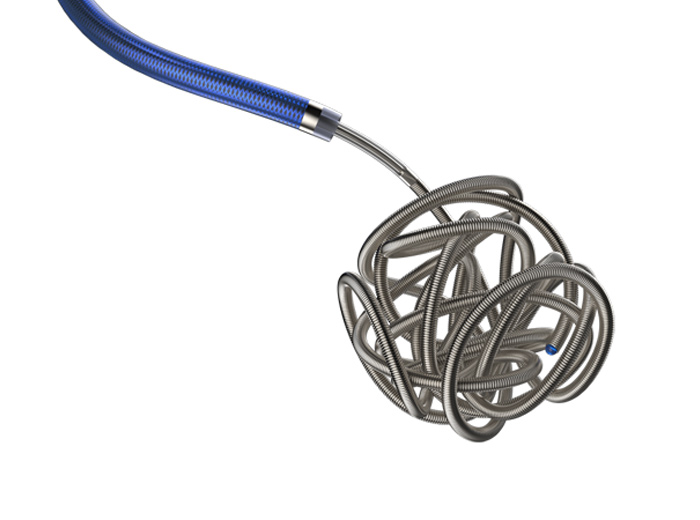the core of our corporate values
Analysis of the Impact of Innovation in Neurological Medical Devicess on Market Development
With the intensification of global population aging and the rise in the incidence of neurological diseases, the neurological medical devices market is welcoming a rapid growth opportunity. Neuro-interventional therapy, as a non-invasive and efficient treatment method, has become a key means of treating various neurological diseases such as stroke, spinal cord injury, tumors, and neuralgia through intravascular catheter operation technology and the support of the Digital Subtraction Angiography (DSA) system. In recent years, technological innovations in the neurological medical devices industry have continuously driven market development, providing patients with safer, more precise, and personalized treatment plans. This article will analyze in detail the innovations in neurological medical devices and how they impact the growth of the neurological medical devices market.
Breakthroughs in Advanced Material Science
Advances in material science have brought significant changes to the innovation of neurological medical devices. The use of biocompatible materials can effectively reduce the immune response of devices within the human body, significantly improving patient comfort and treatment efficacy. The application of polymer materials and nanotechnology has not only improved the accuracy and durability of neurological medical devices but also driven innovations in drug delivery systems. For example, nanotechnology-based drug carriers can precisely deliver drugs to diseased areas, greatly enhancing drug efficacy and reducing side effects. These technological innovations make neurological medical devices more compliant with the needs of precision medicine, providing patients with more efficient treatment solutions.
Leading by Intelligent Technology
The development of intelligent technology is thoroughly transforming the neurological medical devices market. Magnetic navigation technology and robot-assisted surgery have been widely employed in neuro-interventional therapy, greatly improving the precision and efficiency of treatment. For instance, magnetic navigation technology can elevate the precision of surgery to the millimeter level, allowing doctors to operate neurological medical devices more accurately, thereby reducing surgical risks and increasing success rates. Moreover, the advancement of robot-assisted surgery makes surgical operations safer and more stable. Particularly in brain surgeries, it can effectively alleviate the operational difficulty for doctors, further enhancing the success rate of treatments.
The Rise of Personalized Treatment Plans
The continuous development of precision medicine has brought more personalized treatment plans to the neurological medical devices market. By deeply analyzing data such as patients' genes, medical history, and living habits, doctors can tailor the most appropriate treatment plan for each patient. This personalized treatment not only improves therapeutic efficacy but also effectively reduces treatment costs. For example, analysis based on big data can help doctors choose the most suitable drugs and treatment methods for patients, providing a more precise treatment experience and further driving market demand for neurological medical devices.
The Application of Telemedicine and Digital Technology
With the vigorous development of digital technology, telemedicine has become an important trend in the neurological medical devices market. Through internet technology, patients can not only receive neuro-interventional therapy at home but also communicate and consult with doctors in real-time. This technological innovation not only enhances patient comfort and treatment convenience but also provides more accurate diagnostic information through data analysis. For example, internet-based telemedicine systems can upload and process patient data in real-time, allowing doctors to adjust treatment plans based on patients' real-time conditions, making the treatment process more personalized and precise. The rise of telemedicine has continuously expanded the application scope of neurological medical devices, especially in remote areas and developing countries, significantly improving the accessibility of medical resources.
Environmental and Sustainability Considerations
With the increasing global focus on environmental issues, the design and production of neurological medical devices are also becoming more attentive to environmental protection and sustainability. For instance, using degradable or recyclable materials to manufacture devices and reducing the generation of medical waste have become important considerations for many companies when designing neurological medical devices. At the same time, some companies are also developing more efficient energy use solutions to reduce energy consumption and dependence on traditional energy sources. For example, some new types of neuro-interventional devices use solar power technology, which not only reduces carbon emissions but also enhances the environmental friendliness of the devices. These innovations not only positively impact the environment but also steer the neurological medical devices industry towards a greener and more sustainable direction.
The neurological medical devices market is experiencing rapid technological innovation, progressing toward greater intelligence, personalization, and environmental sustainability. Innovations in advanced material science, intelligent technology, personalized treatment, telemedicine, and eco-friendly design have brought vast prospects to the neurological medical devices market. These innovations not only enhance therapeutic efficacy but also improve the quality of life for patients and promote the improvement of global healthcare systems. With continuous technological development and growing market demand, the neurological medical devices industry is expected to maintain its growth trajectory in the coming years, becoming a critical sector in the global medical device field.










